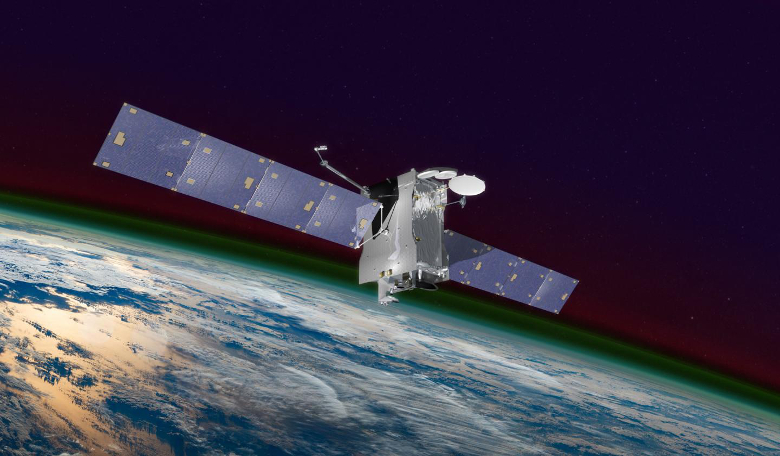Although it had a bumpy start to its assignment, yesterday with the help of a European Ariane 5 rocket, NASA launched a satellite that is hosting its Global-scale Observations of the Limb and Disk, or GOLD mission.
GOLD is set to investigate the ionosphere and thermosphere layers in Earth’s upper atmosphere, where they intermingle with the boundary of space. The cold and frigid environment of space surrounding our planet is not completely empty; it is filled with fast-moving charged particles that have been emitted from the Sun. The particles and the electric and magnetic fields that guide their motion, coupled with Earth’s own magnetic field all combine to influence one another constantly, and when merged with solar activity, coalesce to affect communications and navigation around the world.
"The upper atmosphere is far more variable than previously imagined, but we don't understand the interactions between all the factors involved," said Richard Eastes, GOLD principal investigator at the Laboratory for Atmospheric and Space Physics at the University of Colorado Boulder. "That's where GOLD comes in: For the first time, the mission gives us the big picture of how different drivers meet and influence each other."
It is maybe overshadowed by the events themselves, but incidents such as hurricanes or tsunamis can create waves that travel all the way up to this interface to space, and as they do so, they change wind patterns and cause disruptions. Similarly, when the Sun’s surface erupts in solar flares, flurries of energised particles make their way towards Earth with the potential to disrupt our space environment.
Such influences are not only difficult to predict, but dramatic changes can also occur in as little as an hour. As communication signals, like radio waves and signals that make our GPS systems work, also travel through the ionosphere, understanding the dynamics of this region is therefore critical given humanity’s reliance on satellites for day to day activities.
Despite fears that the satellite had been lost or placed in the wrong orbit after the Ariane 5 rocket it hitched a ride on lost contact with ground crew, reports confirm that the $53 million GOLD instrument is on course to reach its high perch in geostationary orbit using electric propulsion. The manoeuvre will take about four and a half months, after which GOLD will run checks to make sure everything is in order. All being well, the instrument should start relaying its observations around September.
Roughly the size of a mini fridge, GOLD will use a spectrograph to image ultraviolet light to determine the temperature and relative amounts of different particles, such as atomic oxygen and molecular nitrogen. It will then be able to provide a map of the Earth to reveal how atmospheric composition changes by location and how these neutral gases shape ionospheric conditions.
"For years, we've studied Earth's upper atmosphere in detail from the ground and low-Earth orbit," Eastes said. "By backing out to geostationary, we can put things in a global context. You can see half the Earth from out there."
"The first meteorological satellites revolutionised our understanding of – and ability to predict – terrestrial weather," added Elsayed Talaat, heliophysics chief scientist at NASA Headquarters in Washington. "We anticipate GOLD will give us new, similar insight into the dynamics of the upper atmosphere and our planet's space environment."











